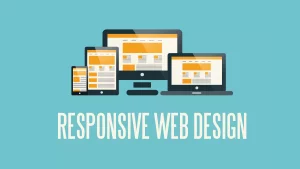Introduction
In today’s digital-first world, users interact with websites on a dizzying array of devices—smartphones, tablets, laptops, desktops, and even smart TVs. With this diversity of screen sizes and resolutions, one-size-fits-all web experiences no longer suffice. That’s where responsive design steps in. This web design approach ensures that sites adapt seamlessly to various screen sizes and orientations, offering an optimal viewing and interaction experience. But responsive design isn’t just about aesthetics or technical performance—it significantly shapes user behavior, affecting everything from bounce rates to conversion rates.
Whether you’re running an e-commerce platform, a personal blog, or an educational site offering chemistry tutoring, understanding how responsive design influences user behavior is key to crafting a more engaging and effective online presence.
Key Points
- Responsive design improves usability and accessibility, fostering longer user engagement.
- It enhances credibility and trust by signaling professionalism and attention to user needs.
- Responsive websites reduce bounce rates and increase conversions due to better user experience.
- Improved SEO rankings are a byproduct of mobile-friendly, responsive web design.
- User behavior analytics show clear patterns in interaction differences between responsive and non-responsive sites.
Understanding Responsive Design
Responsive design refers to a web development approach that enables websites to adapt their layout and content based on the screen size and orientation of the user’s device. This is accomplished using flexible grids, fluid images, and media queries in CSS.
Why It Matters
The average internet user in the United States accesses the web through multiple devices throughout the day. A responsive website ensures that no matter what device or screen size the user is on, they can navigate and interact with your site without friction.
The Psychology of User Behavior
Before diving into how responsive design affects user behavior, it’s essential to understand the psychology that drives online interactions. Users make snap judgments about websites—often within just a few seconds. Factors like ease of navigation, load speed, and visual appeal all influence these judgments.
A website that’s difficult to navigate on a mobile phone, for example, creates frustration and leads to higher bounce rates. On the other hand, a seamless experience encourages users to stay longer, explore more content, and potentially take desired actions like signing up, buying a product, or contacting you.
Key Ways Responsive Design Impacts User Behavior

1. Increases Time on Site
One of the most direct correlations between responsive design and user behavior is the amount of time users spend on a website. A responsive layout enhances readability and accessibility, encouraging users to browse more pages and stay longer.
Users are more likely to abandon a site if they have to pinch-zoom or scroll horizontally. With a responsive design, content reflows naturally across screen sizes, making it easier and more enjoyable to read and interact with.
2. Reduces Bounce Rate
Bounce rate refers to the percentage of visitors who navigate away from a site after viewing only one page. Responsive design directly combats high bounce rates by making the initial experience more welcoming and functional on all devices.
When users can quickly find what they’re looking for without frustration, they’re more likely to continue exploring. This is particularly important for content-driven websites and businesses that rely on user engagement.
3. Boosts Conversion Rates
Whether your goal is to get users to sign up for a newsletter, make a purchase, or contact your team, responsive design plays a critical role. A study by Google found that 61% of users are unlikely to return to a mobile site they had trouble accessing, and 40% will visit a competitor’s site instead.
Conversion paths must be free of friction. Forms, buttons, and call-to-action elements need to be easily clickable and accessible on all screen sizes. Responsive design ensures that these elements adjust appropriately, guiding users smoothly toward conversion.
4. Builds Trust and Credibility
People unconsciously equate the quality of a website’s design with the credibility of the brand behind it. A responsive site shows that you care about all your visitors, not just those on desktops. This attention to user experience builds trust and reinforces your brand’s professionalism.
In industries like healthcare, finance, or education, where trust is paramount, having a responsive and accessible website can be a deciding factor for users.
5. Improves SEO and Visibility
Google has officially stated that responsive design is its recommended mobile configuration. Responsive websites are more likely to perform better in search rankings due to better usability, faster loading times, and lower bounce rates. And when users find your site more easily and navigate it more effectively, behavioral metrics improve in turn.
Real-World Examples
1. Case Study: Online Learning Platforms
Online learning platforms, such as those offering chemistry tutoring and academic coaching, serve students who often access content from mobile devices. A responsive design allows these users to interact with video content, quizzes, and live sessions without technical interruptions. Improved access directly correlates with higher engagement and better educational outcomes.
2. Case Study: E-Commerce Websites
E-commerce brands have seen measurable improvements in sales and customer retention after switching to responsive design. For instance, after implementing a mobile-first responsive layout, one retailer saw a 30% increase in mobile purchases within the first quarter.
Common Mistakes in Responsive Design
- Overloading mobile pages: Avoid cramming too much content into small screens. Prioritize what mobile users need most.
- Unoptimized images: Large image files can drag down load times. Use adaptive image techniques and compression.
- Neglecting touch interactions: Ensure buttons and form fields are appropriately sized for fingers, not just cursors.
- Inconsistent navigation: Make navigation seamless across devices to maintain familiarity and ease of use.
Best Practices for Implementing Responsive Design
- Use mobile-first design principles to ensure key content is prioritized for smaller screens.
- Apply flexible grid layouts that allow content to scale naturally with screen size.
- Utilize media queries to adjust styles based on specific breakpoints (e.g., 480px, 768px, 1024px).
- Test across devices regularly to catch usability issues and inconsistencies.
- Monitor analytics to understand how users from different devices behave and optimize accordingly.
Future of Responsive Design
The future of responsive design goes beyond just screen size. With the rise of wearable tech, voice interfaces, and AR/VR, web design must consider new dimensions of user experience. Responsive strategies are evolving to include not just visual adaptability but also contextual awareness—like time of day, user location, or even input method (keyboard, touch, voice).
AI-powered customization and progressive web apps (PWAs) are also pushing the boundaries of what responsive web experiences can offer. The goal is always the same: meeting users where they are, with the content and functionality they need, in the most seamless way possible.
Conclusion
Responsive design is more than a technical requirement—it’s a crucial component of user engagement and satisfaction. From keeping users on your site longer and guiding them toward conversions, to building trust and improving search visibility, the benefits are extensive and well-documented.
As user expectations continue to evolve, responsive design will remain an essential strategy for delivering impactful digital experiences. Whether you’re running a local business, an online storefront, or a platform for chemistry tutoring, investing in responsive design is investing in your users—and by extension, your success.
FAQ
What is responsive design?
Responsive design is a web development approach that ensures websites automatically adjust their layout and functionality to fit the screen size and orientation of the device being used.
Q1. How does responsive design affect bounce rate?
Responsive design reduces bounce rate by making websites easier to navigate and read on all devices, which encourages users to stay longer and explore more pages.
Q2. Is responsive design important for SEO?
Yes, Google prioritizes mobile-friendly responsive websites in search rankings. Improved usability, faster loading times, and lower bounce rates contribute to better SEO performance.
Q3. Can responsive design increase conversions?
Absolutely. By improving the user experience and ensuring key conversion paths work well on all devices, responsive design can lead to higher conversion rates.
Q4. What’s the difference between responsive and adaptive design?
Responsive design uses a single layout that adjusts fluidly to screen size using flexible grids and media queries. Adaptive design uses multiple fixed layouts tailored to specific devices or screen sizes.
Q5. How often should I test my responsive website?
It’s best to test regularly, especially after updates or changes. Use tools like Google’s Mobile-Friendly Test and test across a range of real devices to ensure consistency.












